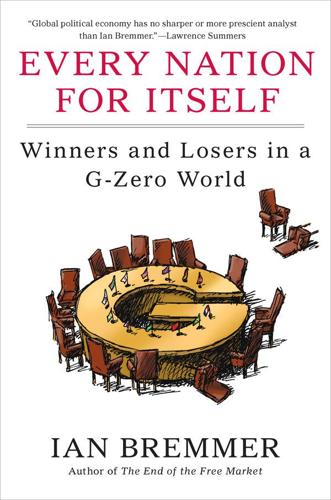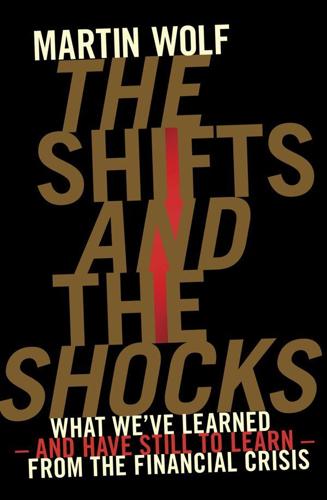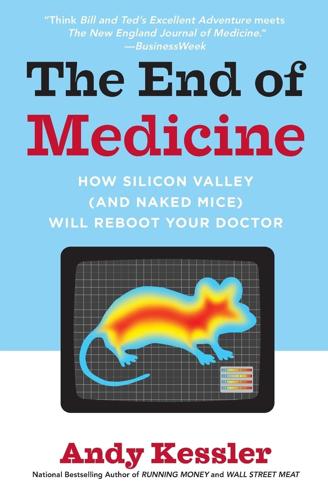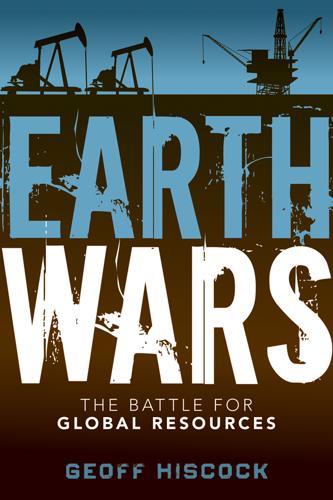global rebalancing
description: the adjustment of economic, political, or social systems on a global scale, often aimed at reducing disparities between countries or regions.
8 results

Every Nation for Itself: Winners and Losers in a G-Zero World
by
Ian Bremmer
Published 30 Apr 2012
China must find a way to shift its economy from dependence on exports toward domestic consumption. Europe needs to ensure that the Germans, Dutch, and Scandinavians don’t end up permanently bankrolling a social safety net for the Greeks, Portuguese, and Spanish. These are policy choices, if unpleasant ones born of necessity, but the world is also facing a global rebalancing between countries like America that consume too much and save too little and those like China that consume too little and save too much. This version of the trend is not the result of policy; it will be an order imposed by economic circumstances over which no one has effective control—and it is only just beginning.
…
The limited international use of its language would also undermine any bid to expand Germany’s cultural influence. But its economic and diplomatic leverage, particularly within Europe, is considerable. This is potentially one of the world’s most important pivot states. With Europe’s most powerful and resilient economy, Germany might find enough common ground with China during a period of global rebalancing to sharply limit the need for China to partner with America. Nor are G-Zero crises that push America and China closer together necessarily more likely than those that might drive them apart. A full implosion in North Korea is as likely to produce U.S.-Chinese conflict as cooperation. U.S. officials would probably insist on Korean reunification—though that would come with a price tag no single state can afford, far in excess of Germany’s reunion, because today’s South Korean economy is not as strong as West Germany’s in 1990 and North Korea has nowhere near the resources that kept East Germany alive.
…
Today’s China is in need of long-term economic and social reforms almost as ambitious, and its government will be undertaking these changes just at a time when the G-Zero is likely to supply the system with unexpected shocks. If Beijing can’t manage the growing social unrest described in the previous chapter, if it can’t cope with a rising tide of environmental disasters, if global rebalancing begins to cost China jobs and to benefit neighboring economies at China’s expense, if a more serious market meltdown inside Europe and the United States—China’s leading trade partners—puts tens of millions out of work, if public disgust with corruption takes on a life of its own on the Internet, if state attempts to quell another student uprising meet resistance coordinated with modern tools of communication, we might well see a fundamental change over time in how China is actually governed.

The Shifts and the Shocks: What We've Learned--And Have Still to Learn--From the Financial Crisis
by
Martin Wolf
Published 24 Nov 2015
A particularly important possibility is weakness in real commodity prices after almost a decade of elevated levels (see Figure 27). If so, that would certainly have a sizeable impact on commodity exporters, many of which are emerging and developing countries. GLOBAL REBALANCING The emerging economies confront one final challenge: global rebalancing after the crises. They were able to take advantage of strong demand growth in high-income economies before then. Afterwards, they had room, for a while, to promote their own domestic demand. But the weakness of demand in the high-income economies is likely to be permanent, not temporary.
…
But there is no way for a single country to deliver this, so long as it has an open capital account and a monetary policy oriented towards domestic price stability. This is particularly true for a country that issues a reserve currency: it effectively loses control over its exchange rate. So this brings us to one of the biggest issues raised by the argument in this book, particularly in Chapter Five: global rebalancing. GLOBAL REFORM One way out of the apparent demand trap would be via global rebalancing. The evidence at present is that high-income countries are no longer able to absorb the savings that would be generated by their private sectors if their economies were running at something close to full capacity and were also not experiencing an unsustainable credit expansion.46 This is why activity has been persistently weak and real interest rates low.
…
But there are also deeper structural issues in many countries, which interact unfavourably with the more adverse external conditions: poor quality of labour forces; ageing of the populations, slowing growth of productivity; and rising external imbalances. Sustaining growth means continued reform. In its absence, sources of rapid growth weaken. That is probably a sizeable part of what we are seeing.25 Managing China’s Inevitable Slowdown The challenge for emerging economies is not just managing the global rebalancing. It is also that of adapting to what might become a big slowdown in the Chinese economy. One of the reasons many emerging economies did so well after the crisis is that China itself did so well (see Figure 20). It is not only the world’s second-largest economy but significantly bigger than Brazil, India and Russia together.

Capitalism 4.0: The Birth of a New Economy in the Aftermath of Crisis
by
Anatole Kaletsky
Published 22 Jun 2010
Again, the problem was not one of principle but of execution, as explained in such excellent books as The Trillion Dollar Meltdown by Charles Morris and Fool’s Gold by Gillian Tett, although sometimes belied by their sensational marketing (Tett’s subtitle was: How Unrestrained Greed Corrupted a Dream, Shattered Global Markets and Unleashed a Catastrophe.) The question of property speculation, on the other hand, demands more attention. House prices have far greater resonance for ordinary people than asset securitization or global rebalancing. Yet the public discussion of the role of housing in the crisis has been misleading and superficial. It is taken as axiomatic in all explanations of the crisis—from tabloid newspaper headlines to learned academic articles—that the rise in U.S. house prices in the years leading up to the crisis was one of the greatest financial bubbles of all time.
…
But because the yen and the euro were both at least as ugly as the dollar, the Fed and the Obama administration were able to implement unprecedented programs of monetary and fiscal expansion without worrying about a flight of capital out of the United States. By doing this, they guaranteed an economic recovery and could afford to continue doing whatever it took to sustain growth in 2010 and beyond. The bigger challenges to the U.S. and world economies will appear from 2011 onward, when the longer-term problems of government and consumer debt, global rebalancing, and structural inflation may need to be seriously addressed. These are among the issues taken up in the last part of this book. Part V Capitalism 4.0 and the Future EVEN IF THE TRANSITION to Capitalism 4.0 occurs in a more orderly and peaceful manner than the previous great transitions of the 1930s and 1970s, many genuine risks will continue to face the democratic capitalist system.
…
But as these countries move back toward full employment, the rebalancing of global growth will make them more prone to inflation than they were in the precrisis years. From this point of view, the sooner the world economy can be rebalanced, eliminating excessive trade surpluses and deficits worldwide, the smaller the risk of dangerous inflationary pressures. Unfortunately, as discussed previously in this chapter, the prospects of such a global rebalancing occurring quickly and smoothly do not seem bright. Protectionism and deglobalization therefore could create the conditions for stagflation to return. Big Government From the mid-1960s until the late 1970s, the world experienced a large upsurge of government spending and employment. This was clearly one of the major causes of stagflation.

The End of Medicine: How Silicon Valley (And Naked Mice) Will Reboot Your Doctor
by
Andy Kessler
Published 12 Oct 2009
The conference room at the Lucas Center was overflowing. I was the only one without a tie. My being there was a surprise for Steve, who recounted a few old lines from some pieces he and I had coauthored way back when, about technology and the economy, blah blah blah. Mostly, he warned about the coming global rebalancing and labor arbitrage and I started nodding out. “What are you doing here?” Steve came up and asked at the end of his talk. “Slumming,” I answered. “Figured I would step in front of a tomato or two aimed in your direction.” “Funny. I see you haven’t changed. Speaking of tomatoes, there’s a dinner at John Bentley’s for a few folks—you should come.

Currency Wars: The Making of the Next Gobal Crisis
by
James Rickards
Published 10 Nov 2011
Suddenly the G20 breathed new life into the IMF by positioning it as a kind of Bank of the G20 or proto–world central bank. Its ambitious leader at the time, Dominique Strauss-Kahn, could not have been more pleased, and he eagerly set about as the global referee for whatever guidelines the G20 might set. Despite this heady start toward global rebalancing and President Obama’s personal buy-in, two G20 summits came and went in 2010 with no significant progress in the commitments of member nations to the Pittsburgh summit goals. The IMF did conduct extensive reviews of the practices of each country under the heading “mutual assessment” and continued allegiance to the framework was paid in the G20 communiqués, but the ambitious goals of rebalancing were essentially ignored, especially by China.

Earth Wars: The Battle for Global Resources
by
Geoff Hiscock
Published 23 Apr 2012
Other Wiley Editorial Offices John Wiley & Sons, 111 River Street, Hoboken, NJ 07030, USA John Wiley & Sons, The Atrium, Southern Gate, Chichester, West Sussex, P019 8SQ, United Kingdom John Wiley & Sons (Canada) Ltd., 5353 Dundas Street West, Suite 400, Toronto, Ontario, M9B 6HB, Canada John Wiley & Sons Australia Ltd., 42 McDougall Street, Milton, Queensland 4064, Australia Wiley-VCH, Boschstrasse 12, D-69469 Weinheim, Germany ISBN 978-1-118-15288-1 (Cloth) ISBN 978-1-118-15291-1 (ePDF) ISBN 978-1-118-15290-4 (Mobi) ISBN 978-1-118-15289-8 (ePub) Maps Africa Asia Southeast Asia Australia Middle East Europe North America South America Introduction What we are experiencing with the transformation of China is a once in a century or more event. It really is the start of a global rebalancing—a rebalancing that will continue to unfold over many decades. —BHP Billiton Chairman Jac Nasser, 9 May 2011 Six hundred years ago, China neither needed nor wanted anything from the West. It was the Middle Kingdom, the centre of the world, the seat of all that a civilization could possibly need to advance and prosper.

The Default Line: The Inside Story of People, Banks and Entire Nations on the Edge
by
Faisal Islam
Published 28 Aug 2013
As much as 60 per cent of China’s exports are made by foreign-owned companies, many from the USA. The iPad and iPhone are the most famous US-invented contributors to the USA–China trade deficit. So exporting China’s infrastructure boom around the world is China’s preferred route for the much-vaunted ‘global rebalancing’ agenda. Other post-crisis efforts at rebalancing the global economy have made minimal progress. One leading central banker refers to the discussions at the G20 as a ‘depressing waste of time’. The mere absence of a savage trade war in the aftermath of the crisis is the only notable but limited sign of success.

What If We Get It Right?: Visions of Climate Futures
by
Ayana Elizabeth Johnson
Published 17 Sep 2024
See human health healthcare, 286, 288 heat and heat waves, 11, 12 adapting to, 172, 194–95, 387 problems and possibilities, 34, 88–89, 344 temperature regulation through the water cycle, 41–42 violence and, 13, 252n See also cooling; disasters; global warming heat pump, 156 Hickel, Jason, 179 high-speed rail, 389 Hill, Lauryn, 136 Hip Hop Caucus, 145 Hitt, Mary Anne, 324 Hollywood, 7, 204–6 hope, 397–99, 417 House Committee on Natural Resources, 316 House Select Committee on the Climate Crisis, 284, 311 housing, 91–92, 235 disaster exposure, 344, 345, 375 what transformation could look like, 294–95 See also architecture and design; built environment; climate migration; disasters How to Save a Planet (podcast), 16, 220, 225, 226–28 HR 40, 83 HSBC, 151–52 Huffman, Jared, 311 human health: air pollution impacts, 13, 268–69, 337, 344 extreme heat and, 13, 344, 387 fossil fuel industry and, 287, 328, 332, 337, 377 health inequities, 287, 328, 337, 387n hurricanes, 11, 19, 20, 283, 403–4 Katrina and its aftermath, 348–51, 365, 368, 371, 372 See also disasters hydropower, 186, 276 I ice: melting and thawing, 11, 12, 19, 21, 39 reflectivity and its impacts, 39 IIJA (Infrastructure Investment and Jobs Act), 316, 317 imagination, 3, 46, 110, 167, 186, 208, 214 IMF (International Monetary Fund), 148, 270 immigration and immigration policy, 148, 256, 338, 375 See also climate migration implementation, 110, 261, 266, 317, 329, 423 Indigenous communities, 50, 344, 366, 387 Begay on building Indigenous power, 382–92 traditional knowledge and practices, 45–46, 69–70, 370–71, 383–84, 389–90, 402 Indigenous lands: biodiversity on, 345, 382 climate change impacts, 386–87 cobalt mining, 370 land-use consent and management rights, 390–91 reclaiming, 78–79, 382, 391 Indigenous sovereignty, 376, 378, 382–83 FPIC rights, 390–91 Indigenous wisdom, 70, 370 induction cooktops, 156 industrial agriculture, 13, 34, 55, 76, 79, 84, 410, 412 meat and dairy production, 13, 34, 35, 56 See also agribusiness; agriculture industrial decarbonization, Shah on, 187, 189–90, 192 inequities: climate impacts, 13 disasters/disaster response and, 344, 350 environmental law enforcement inequities, 327–28 global, rebalancing, 145–48 human health, 287, 328, 337, 387n inverse wealth and emissions disparities, 138, 148, 169, 200 land ownership, 59–61, 70–71, 76–79, 83, 85 nature access, 296 in our food system, 70–71 See also economy; justice Inflation Reduction Act (IRA), 158, 228n, 261, 292, 295, 322, 334n clean energy funding, 154, 165, 172, 183, 261, 336 ocean-focused provisions, 316 Inflection AI, 120 infrastructure: for recycling, 105–6 See also architecture and design; built environment; clean energy development Infrastructure Investment and Jobs Act (IIJA), 316, 317 insect diversity, 47 Inside Climate News, 236 Inslee, Jay, 309, 310, 311 insulation, 156–57, 211, 383–84 insurance, 332, 357, 360 crop insurance, 307, 413 flood insurance, 359, 360 interdependence, xix intergenerational collaboration, 149–50, 246, 253–54, 388 Intergovernmental Panel on Climate Change (IPCC), climate assessment reports, 23, 24, 25, 141 international climate issues and negotiations: Gallagher on, 264–81 geographic wealth and emissions disparities, 145–48, 260 See also UN climate negotiations International Energy Agency, 145 International Monetary Fund (IMF), 148, 270 interviews: Paola Antonelli, 104–17 Xiye Bastida and Ayisha Siddiqa, 238–55 Jade Begay, 382–92 Regine Clément, 169–78 Abigail Dillen, 324–41 Brian Donahue, 49–63 Kelly Sims Gallagher, 263–81 Rhiana Gunn-Wright, 285–301 Bryan C.